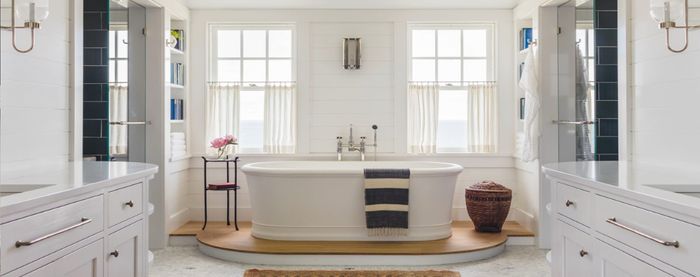Bathtub Buyer’s Guide
Learn the pros and cons of all common tub materials–including acrylic, cultured stone, fiberglass, and enameled cast iron, and steel–so you can choose the perfect tub for any bathroom.
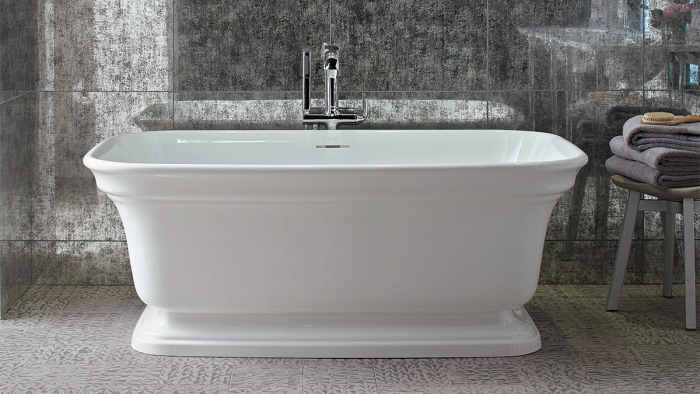
Synopsis: Senior editor Patrick McCombe gives a rundown of the different materials available for bathtubs, including acrylic, cast iron, cultured stone, fiberglass, and steel. He describes the pros and cons of each materials along with average cost and examples of specific bathtub makes and models. The article also includes an explanation of installation options, from freestanding to undermount, along with details to know before heading to the showroom to buy a new tub.
After a long day, it’s hard to imagine anything more relaxing than a soak in a hot bathtub. But figuring out what kind of tub to buy can be challenging, with so many materials, shapes, and sizes to consider. The myriad of options can make the decision process overwhelming, and the stakes are fairly high, because this is a big-ticket item. A recent Home Advisor report says it costs between $1000 and $5200 to replace or install a new bathtub. Knowing what materials are available and the features and construction to look for will ensure you don’t make a very expensive mistake and can have the most worry-free soaks possible.
5 Types of Tubs
Any discussion about a bathtub starts with what it’s made of. Although you can get bathtubs made from copper, stainless steel, stone, and even wood, mainstream tubs are made from one of five materials: acrylic, cast iron, cultured stone, fiberglass, or steel.

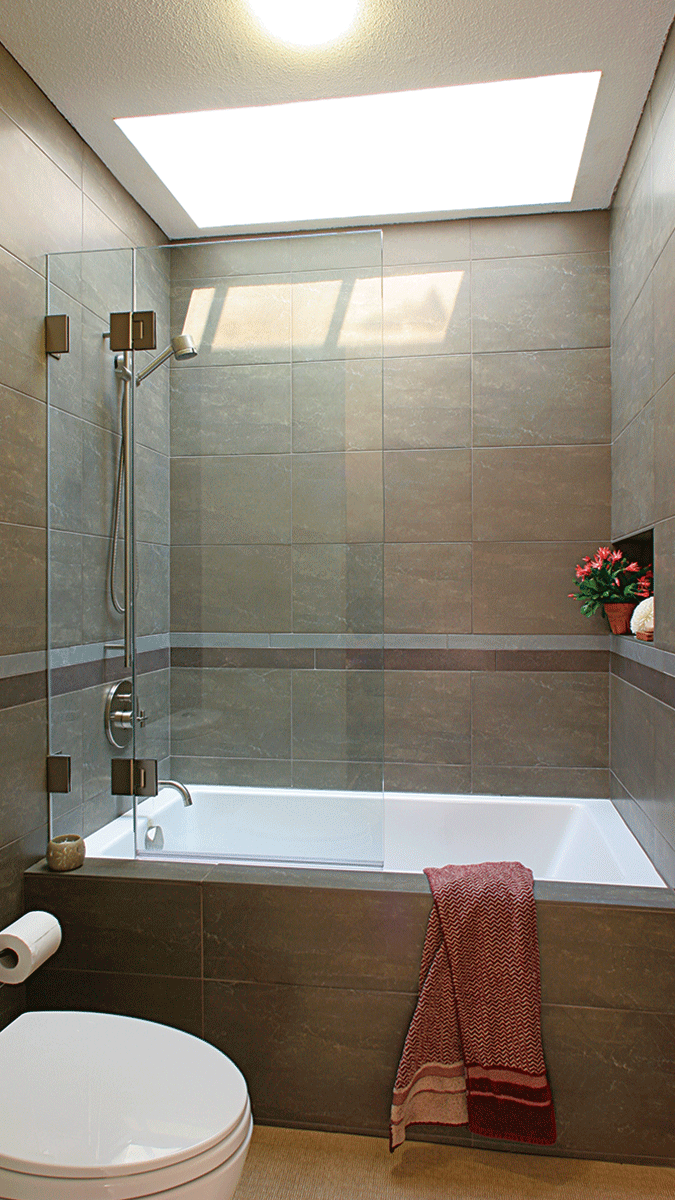
1. Acrylic
Acrylic tubs can be virtually any shape, and they can look good for a long time because their color goes all the way through the plastic resins that they’re made from. Acrylic is easy to clean and is warm to the touch, so you can lean back for a soak right away without recoiling from contact with a cold surface. A light scrubbing with a liquid nonabrasive cleaner will usually remove hard water and other stains.
Pros
• Available in a wide variety of shapes and styles
• Impact and fade resistant
• Often available with matching shower surrounds
Cons
• Difficult to repair
• More susceptible to stains than porcelain
• Inexpensive versions flex during use
Average Cost
$800 to $1200 (with some up to $5000 or more)

2. Cast Iron
The durability of cast iron is unsurpassed because of its ultrathick porcelain finish. This layer is thicker than the enamel on steel tubs because cast iron is a rougher base. It’s also comfortable for bathing because the thicker composition keeps water hot longer. Perhaps the biggest downside to cast iron is its weight, which makes installation more difficult in many instances.
Pros
• Available in many sizes and shapes
• Durable high–gloss finish
• Retains heat well
Cons
• Although durable, the finish can be chipped or scratched
• Heavy
• More expensive than other standard–size tubs
Average Cost
$500 to $900 (with some up to $5000 or more)
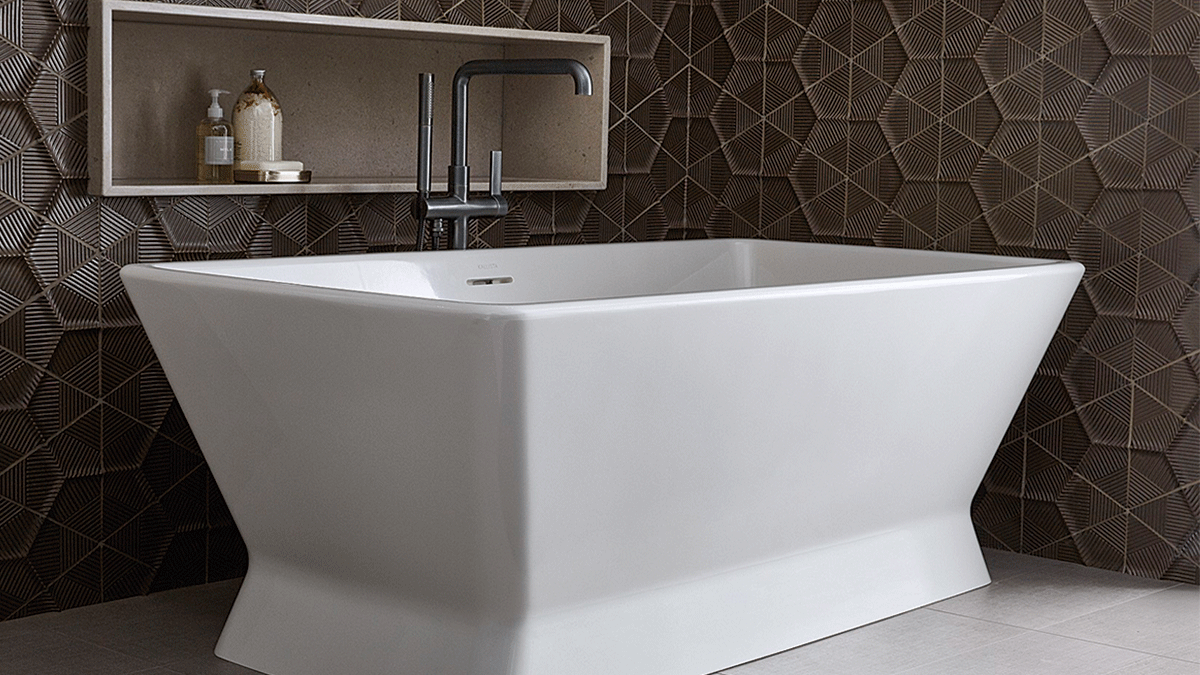
3. Cultured Stone
Available in many colors and patterns, a cultured stone tub can be a spectacular focal point. The crushed stone and resin composition is stylish, but it’s expensive and heavier than all other mainstream bathtub materials, which can be a problem in remodels and even in new homes if its significant weight (hundreds of pounds) is not considered. Most wood-framed floor systems will need structural upgrades to resist sagging.
Pros
• Luxurious focal point
• Many colors available
• Retains heat well
Cons
• May require structural upgrades
• Very heavy
• Expensive
Average Cost
Starts at $1000
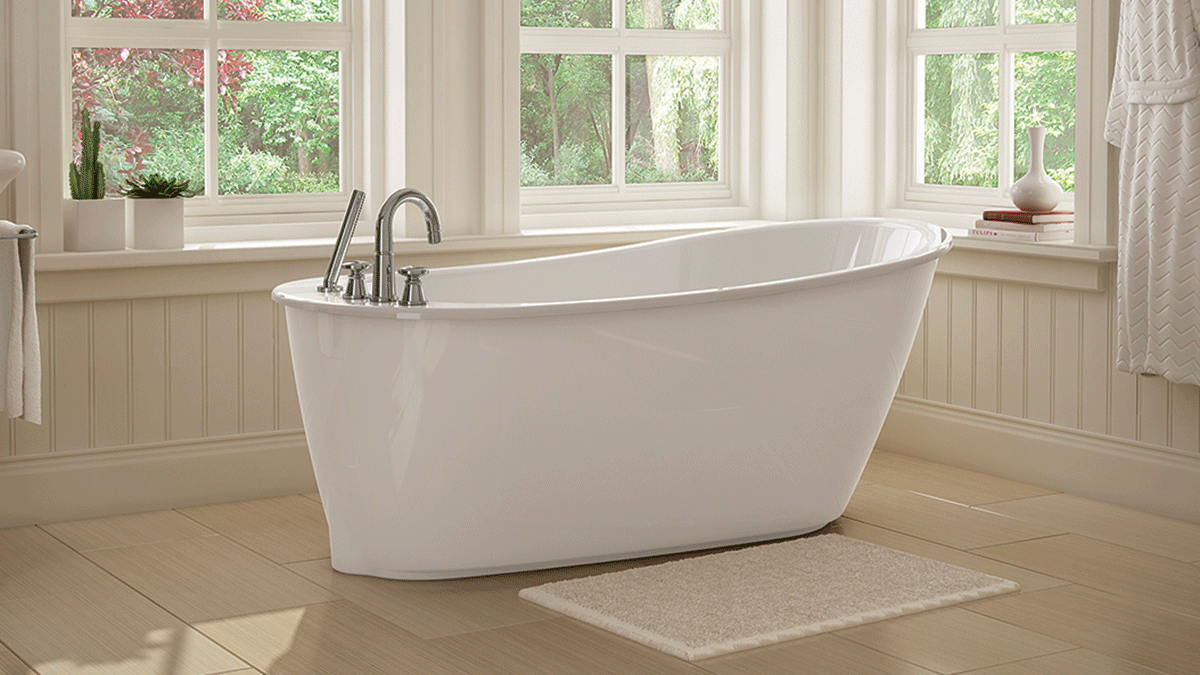
4. Fiberglass
Fiberglass tubs have a thick coating, called a gel coat, on top of the structural fiberglass. The gel coat and even the fiberglass can crack when subject to an impact like a falling shampoo bottle or shaving cream can. The coating can also scratch when rubbed with abrasive pads or cleaners. Fiberglass is an economical choice and it comes in a wide range of colors, styles, and sizes. It is also lightweight, making it great for remodeling.
Pros
• Lightweight
• Often available with matching shower surrounds
• Wide range of sizes, styles, and colors
Cons
• Gel-coat finish is easily scratched or cracked
• Inexpensive models may flex during use
• Colors can fade
Average Cost
$400 to $1000
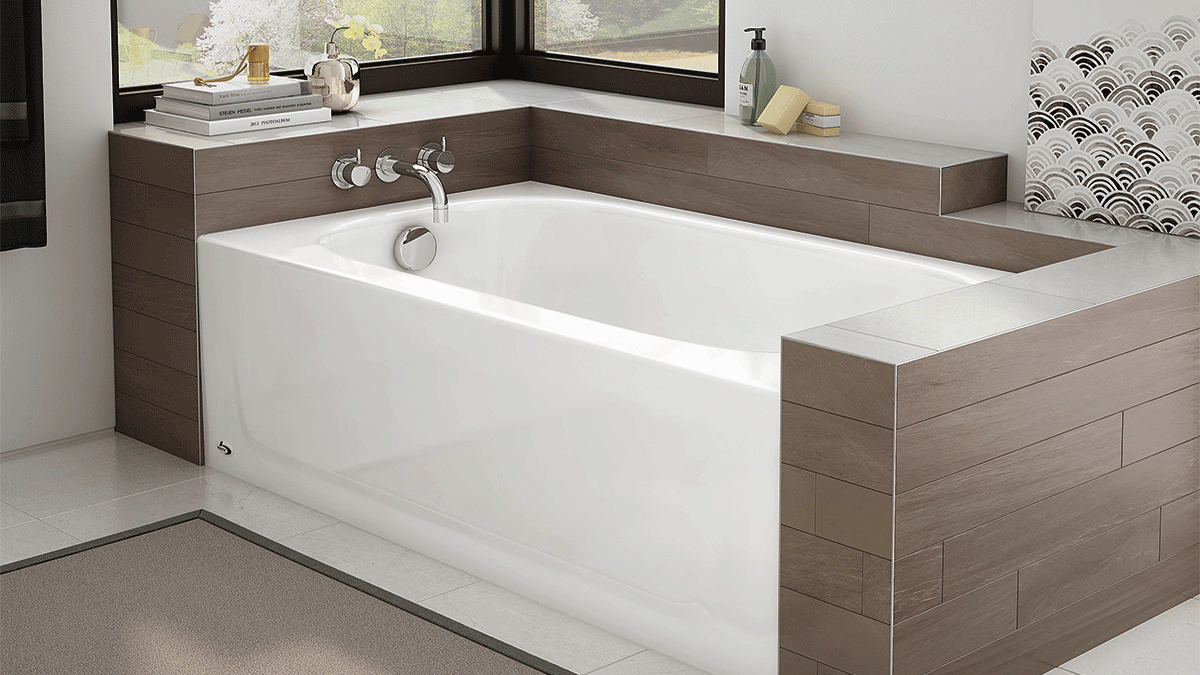
5. Steel
Made from stamped steel with a porcelain-enamel finish baked to its surface, steel tubs are relatively durable and moderately priced. Stick with better versions that are made of thicker steel, making them less noisy and their bottoms more rigid. Steel tubs are the least expensive type of bathtub and much lighter than cast iron, but they lack cast iron’s sound-deadening and insulating qualities, although high-quality steel tubs generally have additional sound-absorbing material on their undersides.
Pros
• Porcelain finish does not fade and is easy to clean
• Inexpensive
• Lightweight
Cons
• A thinner enamel finish is more susceptible to chips and cracks than cast iron
• Poor at muffling and dampening sound
• Available in fewer shapes and styles than most other materials
Average Cost
$200 to $600
Installation options
There are six basic styles of bathtub. Virtually all tubs require a 2-in. waste line and either 1⁄2-in. or 3⁄4-in. supply lines. The larger-diameter supply pipes will fill the tub faster, but you’ll have to flush twice the volume of cool water before the hot water starts flowing, unless the water heater is close by or a hot-water recirculation system is installed.
Alcove and corner
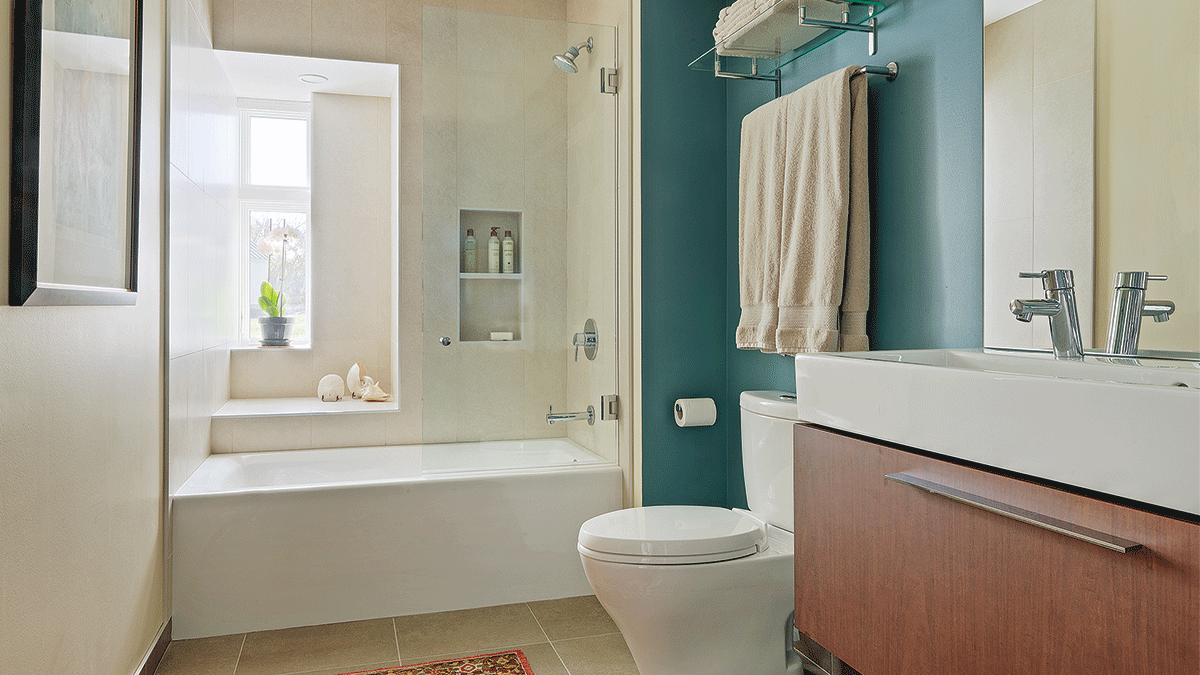
Alcove: Placed within three walls and allowing access from only one side of the tub, alcove installations are an easy way to get a tub/shower combination. The two most common alcove tub sizes are 60 in. by 30 in. and 60 in. by 32 in. These are the rough-in dimensions of the tub—a typical 60-in. by 32-in. tub will have a smaller bathing well, about 55 in. by 24 in. at the top, narrowing to 45 in. by 22 in. at the bottom. Thirty-in. tubs have an even smaller bathing well (55 in. by 22 in.), which many adults find too narrow to be comfortable.
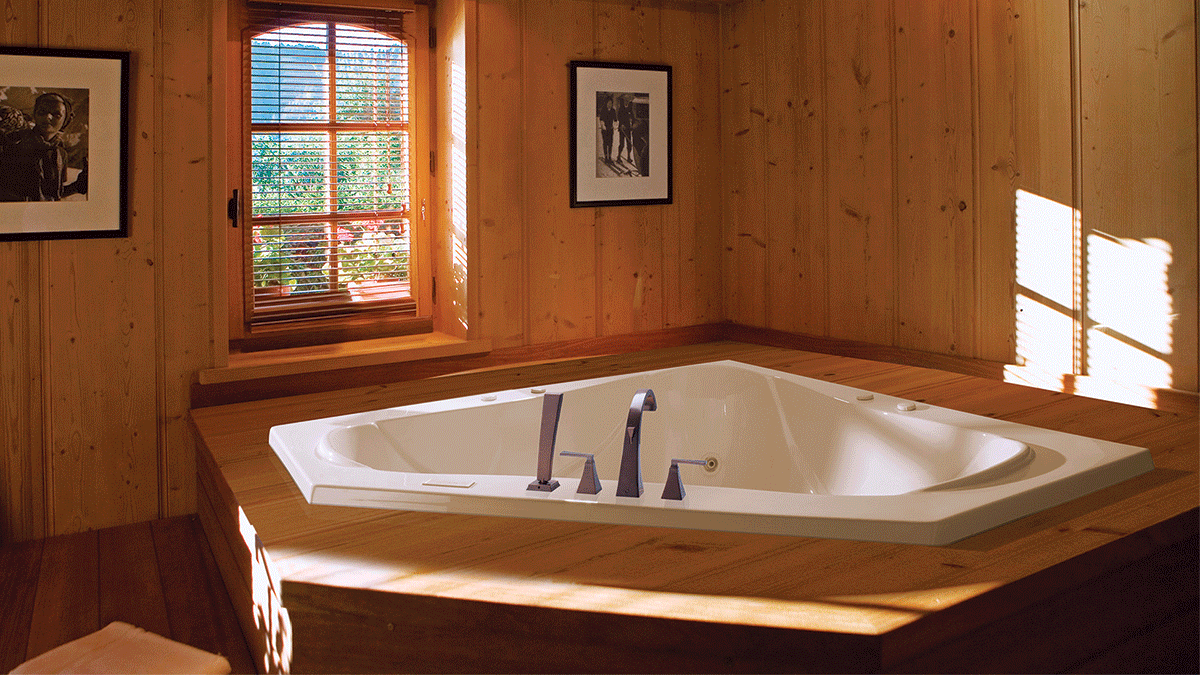
Corner: As the name implies, a corner tub installation locates the tub in a 90° corner formed by intersecting walls. Corner tubs can be freestanding, drop-in, or undermount. Installing a corner tub is virtually the same as installing a tub elsewhere in the bathroom, but because the arrangement leaves less room for the tub filler, you have to carefully consider the placement of the filler and the hot and cold taps, so you don’t have to crawl over them as you get in and out of the tub.
Freestanding and soaking
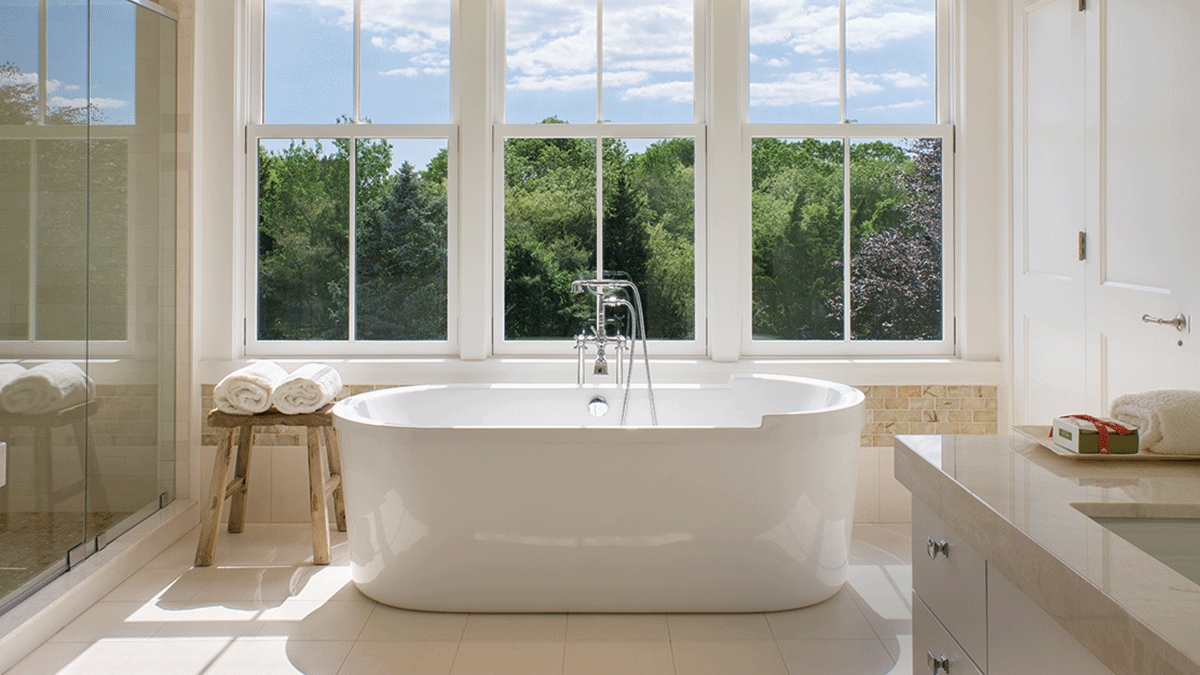
Freestanding: Prior to the building boom following World War II, nearly all bathtubs in the U.S. were freestanding. Freestanding tubs can be fully exposed with finished flooring underneath or they can be skirted with panels made from virtually any water-resistant material. Freestanding tubs are most often cast iron or acrylic, but they can also be made from more exotic materials like cultured stone, copper, and even wood. Both tub drains and supply lines that connect to freestanding tubs are often on display, so their aesthetics should be considered as part of the design.
Soaking: Soaking tubs are often freestanding, but they’re usually deeper, wider, and longer than conventional freestanding tubs. Common lengths are 61⁄2 ft. or 7 ft., allowing even the tallest family members to recline comfortably—some tubs can even accommodate two adults. The tubs themselves weigh hundreds of pounds or more, not including the water, so most wood framing will require structural upgrades to deal with the weight.
Drop-in and undermount
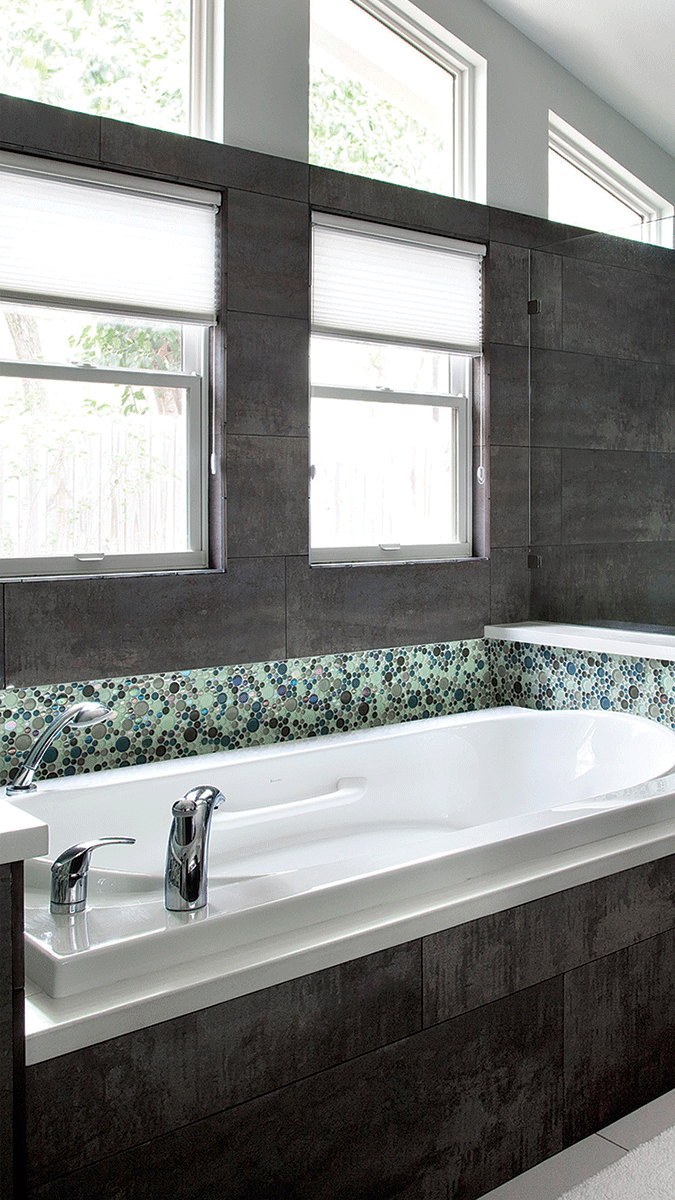
Drop-in: This type of bathtub sits on top of a wood-framed structure that is built ahead of the tub installation. Come installation time, the tub is lowered into place and the plumbing connections are completed. The tub filler is often mounted on top of the deck, but it can also emerge from the floor or from an adjacent wall. Platforms can be completely freestanding or attached to one or more walls. They can also be installed in a corner.
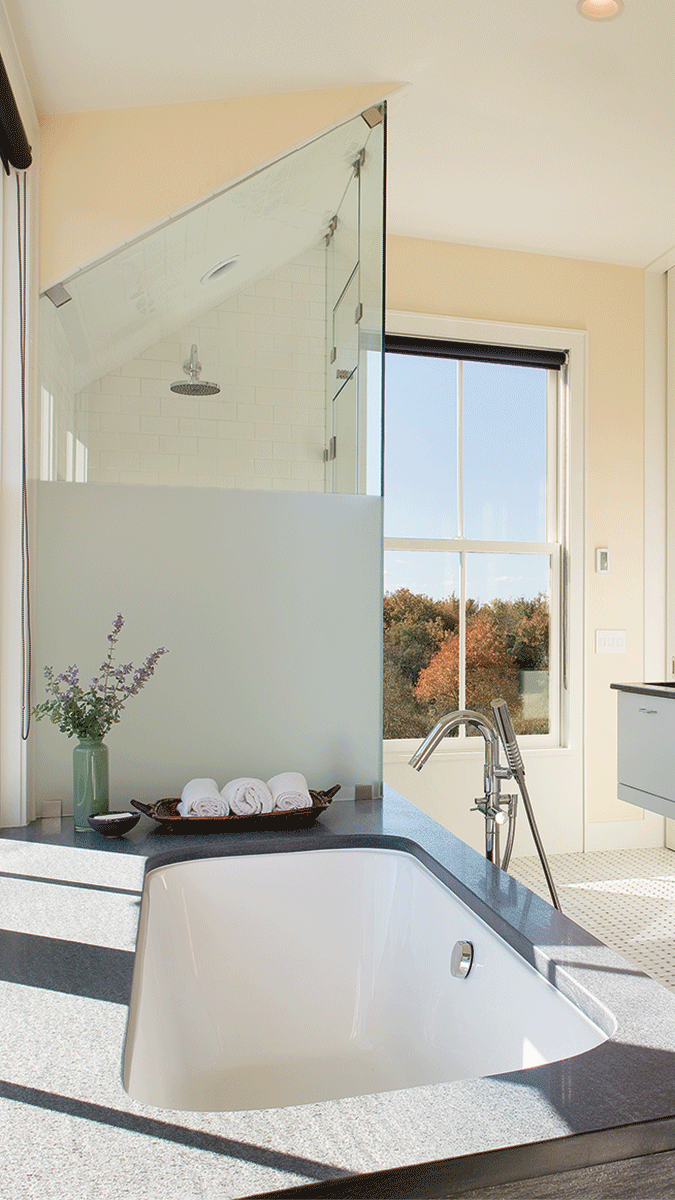
Undermount: This is similar to a platform installation in that it is installed in a site-built enclosure that’s constructed ahead of the tub installation. Once the tub is in place, the rim of the tub and the top of the enclosure are covered by a deck top made of stone, tile, or other waterproof material. The tub itself is supported by the floor system. The tub filler can be mounted on the deck or it can emerge from an adjacent wall or from the floor.
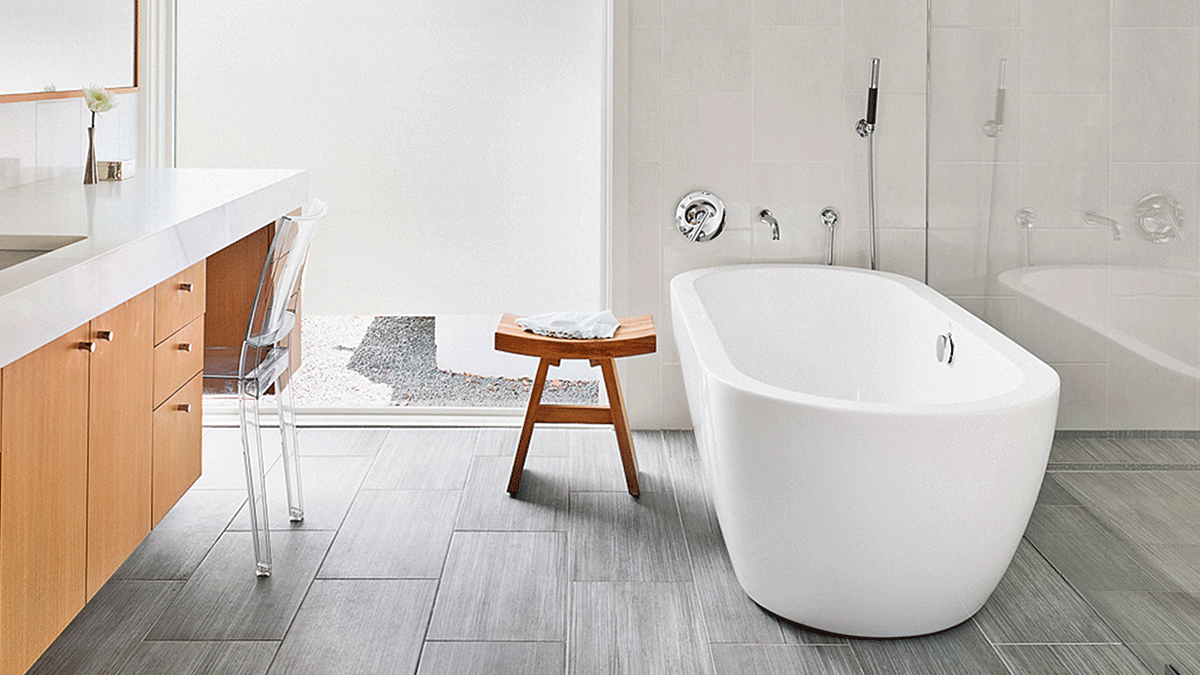
Need-to-know before you buy
Before heading to the kitchen and bath showroom, you’ll need answers to the following questions. You may need to have one or more conversations with your plumber or general contractor, but the effort will ultimately save time and frustration.
Will I have enough hot water?
Don’t expect to make a hot bath in a large soaking tub with a conventional 40-gal. or 50-gal. water heater, unless you live alone. Large tubs require 50 gal. or more of hot water, and if someone else is using hot water at the same time or there’s been even a moderate draw recently, you’ll be lucky to get a lukewarm soak. If you plan to use your bathtub often, it would be wise to invest in the most efficient water heater you can find.
Will I need future repairs?
Jetted tubs and air baths have pumps and motors that will eventually need service. Plan for easy access or you’ll regret it later. Also think about wasteline cleanouts and how you’ll get to them when the bathroom is complete.
Can the floor take it?
A conventional freestanding cast-iron bathtub filled with water and a bather can weigh 1000 lb. Soaking, undermount, and platform tubs are often even heavier. The heavy footprint is most often spread over a large enough area that it’s generally not a concern in houses with modern framing, but it can be too much for older homes with undersize joists or structural deficiencies. In this case, you may need to reinforce the floor framing.
Where do I put blocking?
Blocking is merely pieces of wood or plywood attached to framing behind wall surfaces in places where you need to securely fasten fixtures or cabinetry. Plumbers often need blocking behind shower valves and spray heads. Make sure the blocking is installed to the proper depth. This is important for the same reasons mentioned under wall thickness. Also consider the locations of towel bars and wallmounted accessories near the tub. Seriously consider adding blocking for future grab bars as it’s difficult or impossible to add later without tearing into the tile.
What is the wall thickness?
Taps and tub fillers must be installed to the proper depth for correct operation and so the trim pieces will fit on the valve stems. High-end faucets are especially unforgiving when it comes to wall or tubdeck thickness—3⁄8 in. can be the difference between a successful installation and a redo. Talk to your tile setter after you’ve chosen the tile as the final wall or tub deck thicknesses can vary depending on their setting methods.
Where will the drain be located?
Accurate pipe placement during rough plumbing is crucial for the installation of any bathtub. The tub drain should be under the tub filler and showerhead. It’s possible to change the location, but the expense is often a deal breaker and may not be possible, depending on the routing of the waste and vent system. Alcove tubs are left or right-drain, determined when looking into the alcove from outside. Freestanding, drop-in, undermount, and corner installations can be left, right, or center.
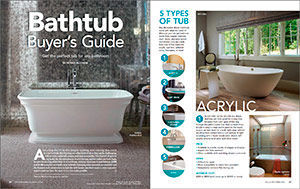
From FineHomebuilding #287
To view the entire article, please click the View PDF button below.
More on bathtubs:
What’s the Difference: Tubs – Plastic, Steel, or Cast Iron?
Baths with Freestanding Tubs – Residential design tips: freestanding bathtubs add elegance to a bathroom like nothing else.
Tubs for Small Spaces – When a standard 5-ft. tub won’t fit the bathroom, consider one of these alternatives.
